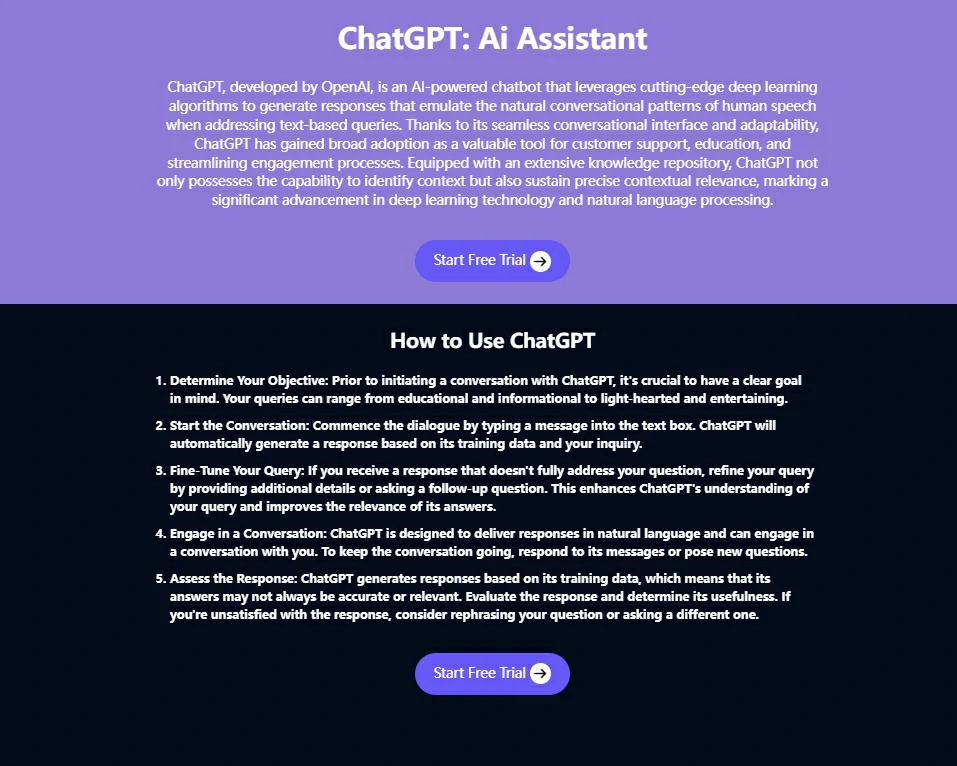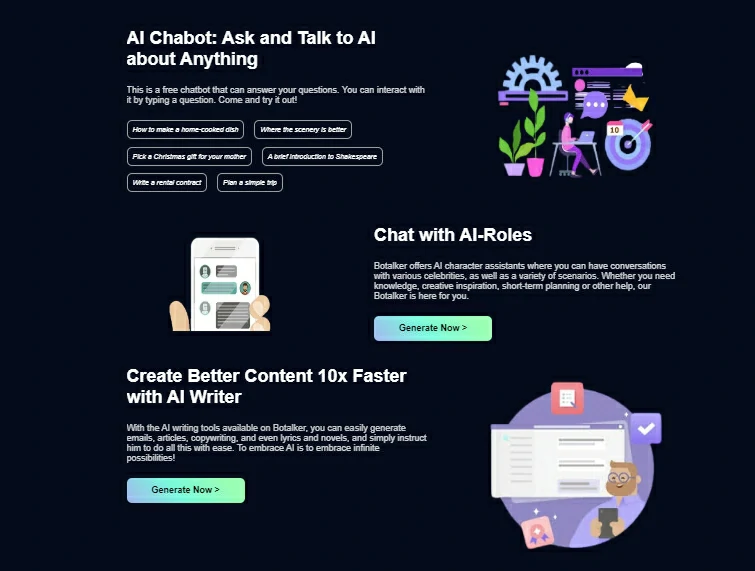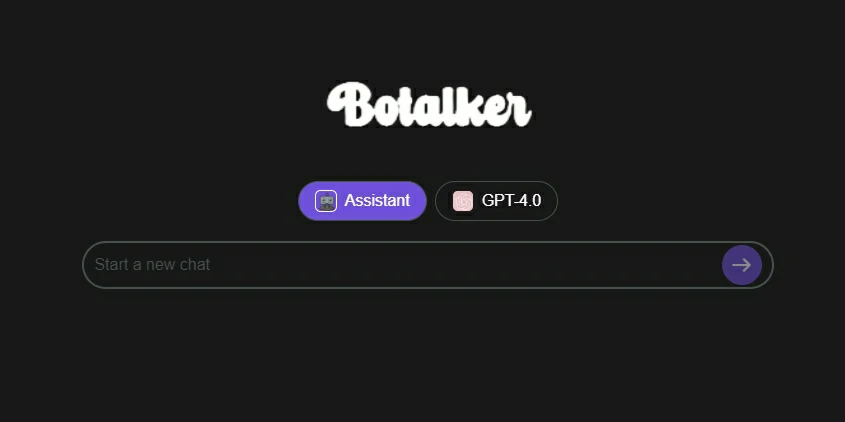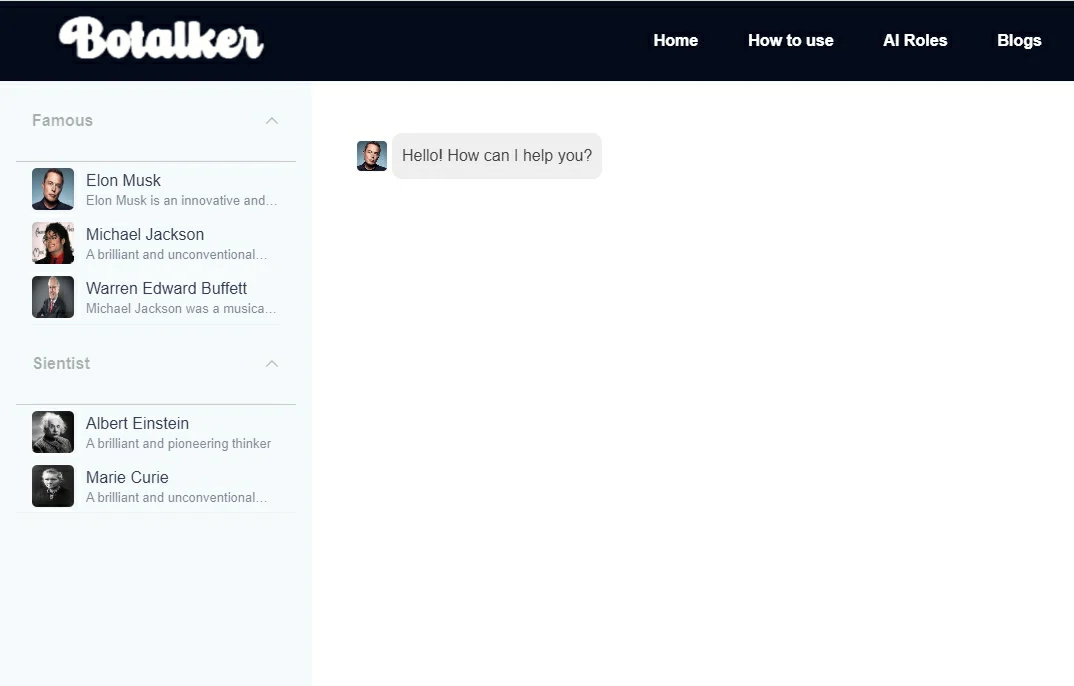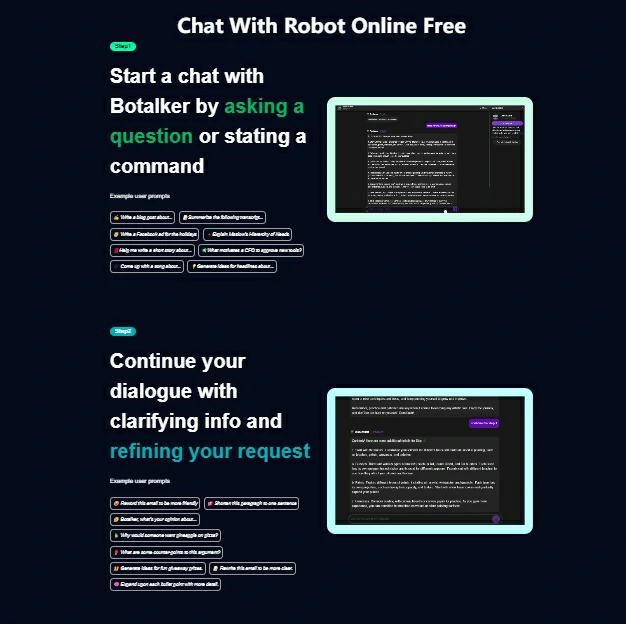ChatGPT: Ai Assistant
ChatGPT, developed by OpenAI, is an AI-powered chatbot that leverages cutting-edge deep learning algorithms to generate responses that emulate the natural conversational patterns of human speech when addressing text-based queries. Thanks to its seamless conversational interface and adaptability, ChatGPT has gained broad adoption as a valuable tool for customer support, education, and streamlining engagement processes. Equipped with an extensive knowledge repository, ChatGPT not only possesses the capability to identify context but also sustain precise contextual relevance, marking a significant advancement in deep learning technology and natural language processing.
How to Use ChatGPT
- Determine Your Objective: Prior to initiating a conversation with ChatGPT, it's crucial to have a clear goal in mind. Your queries can range from educational and informational to light-hearted and entertaining.
- Start the Conversation: Commence the dialogue by typing a message into the text box. ChatGPT will automatically generate a response based on its training data and your inquiry.
- Fine-Tune Your Query: If you receive a response that doesn't fully address your question, refine your query by providing additional details or asking a follow-up question. This enhances ChatGPT's understanding of your query and improves the relevance of its answers.
- Engage in a Conversation: ChatGPT is designed to deliver responses in natural language and can engage in a conversation with you. To keep the conversation going, respond to its messages or pose new questions.
- Assess the Response: ChatGPT generates responses based on its training data, which means that its answers may not always be accurate or relevant. Evaluate the response and determine its usefulness. If you're unsatisfied with the response, consider rephrasing your question or asking a different one.

ChatGPT represents a state-of-the-art artificial intelligence language model created by OpenAI. It stands as one of the largest and most potent language models globally, boasting an impressive 175 billion parameters. This model excels at crafting human-like responses across a broad spectrum of prompts, rendering it an indispensable asset for chatbots, virtual assistants, and various conversational applications. ChatGPT's extensive training on vast internet text data imbues it with remarkable versatility and adaptability, suitable for an array of use cases.
ChatGPT has the potential to revolutionize the way humans interact with technology. Its ability to produce natural-sounding language ushers in a realm of possibilities for chatbots and virtual assistants, enabling personalized and engaging interactions with users. Furthermore, ChatGPT can analyze text data, execute natural language processing tasks, and generate automated responses, making it a priceless tool for enterprises seeking to streamline their customer service operations.
While ChatGPT's capabilities are remarkable, it's imperative to acknowledge the ethical considerations surrounding the use of artificial intelligence. As technology advances, it becomes paramount to ensure the ethical and responsible development and implementation of AI. OpenAI has proactively addressed these concerns by restricting access to the full model and developing tools to identify and mitigate bias in the model's outputs.

